A complete timeline from our origins to the present day
Enjoy this special journey through time to learn all about the profound moments, premieres, awards, and milestones that have propelled our Company for over seven decades.
1950s: THE EARLY YEARS
1954
Paul Taylor presents his first professional work and his first collaboration with artist Robert Rauschenberg: Jack and the Beanstalk.
1956
Mr. Taylor choreographs 3 Epitaphs and Mr. Rauschenberg designs iconic costumes. The dance prompts Martha Graham to call Taylor a “naughty boy.”
1957
Mr. Taylor presents his first full evening of his own choreography titled Seven New Dances by Paul Taylor at the Kaufmann Concert Hall in New York City. Seven New Dances provokes critic Louis Horst to write a review published in the Dance Observer consisting entirely of three inches of blank space.
1960s: AN INTERNATIONAL COMPANY
1960
In Mr. Taylor’s first European tour, Meridian, Tablet, 3 Epitaphs, Rebus and Circus Polka are danced at Italy’s Spoleto Festival after Lincoln Kirstein recommended Mr. Taylor to director Gian Carlo Menotti. While at Spoleto, Mr. Taylor is invited to create The White Salamander for The Netherlands Ballet. This is the first time he uses the pseudonym George H. Tacet, Ph.D. as the designer.
1961
The Company has its first performance at the American Dance Festival, Connecticut College, New London and premieres Insects and Heroes, with sets and costumes by Rouben Ter-Arutunian. Mr. Taylor choreographs Junction, the first work in a long-term collaboration with designer Alex Katz, and the first time Mr. Taylor uses a Baroque score, a rarity in modern dance.
1962
The Company performs in Paris as part of the Festival of Nations. Although most of the 23 participating countries are represented by larger and essentially classical companies, Mr. Taylor wins an award for Best Choreographer. Sold-out performances and an invitation to be involved in a TV performance in Turin in four weeks time leads to Taylor extending his Paris performances into a season at the Théâtre des Artes. As with many American artists, the recognition and glowing compliments bestowed on Taylor in Europe open doors for him in the U.S.
While the Company is based in Paris, Mr. Taylor begins choreographing Aureole.
Aureole premieres on August 4, 1962 at the American Dance Festival, Connecticut College, New London. The dance broke away from other modern dance choreography of the time by using classical music by Handel and instantly becomes one of Mr. Taylor’s signature pieces.
1963
The Company marks its first Broadway season, at the Little Theater, produced by Richard Barr, Edward Albee and Clinton Wilder. The Company would subsequently have eight seasons housed in traditional Broadway theaters.
1964
The Company has its first London season, at the Shaftsbury Theatre in the West End.
1965
Mr. Taylor choreographs From Sea to Shining Sea, thus initiating a series of works based upon Americana themes, as well as a long-time collaboration with designer John Rawlings.
A tour of South America is the first of 11 tours as goodwill ambassadors under the auspices of the Department of State. The Company begins to be presented on a larger scale, and performs more often and in larger theaters, often with live music. Resident orchestras are rehearsed and conducted by Simon Sadoff, the company’s first Music Director.
1966
The Paul Taylor Dance Foundation is established.
Mr. Taylor choreographs Orbs, a two-act dance set to Beethoven’s final string quartets. The Company begins a collaboration with lighting designer with Jennifer Tipton that continues with the Company to this day.
1967
Mr. Taylor wins 16th Annual Capezio Dance Award. The citation reads as follows: “To Paul Taylor, for training a company of brilliant young dancers in a style which complements his own inimitable dance technique, and with them building a repertoire which has immeasurably enriched American modern dance and has brought prestige to that unique native art form wherever he has shown it all over the world on behalf of the Cultural Presentations Program of the U.S. Department of State.”
1968
The Company returns to Paris to represent the U.S. at the Paris Festival.
The Royal Danish Ballet performs Aureole. This is the first time a ballet company licenses a Taylor work.
1969
Mr. Taylor is elected Chevalier de l’Ordre des Arts et des Lettres in France.
1970s : A GENIUS EMERGES
1970
Mr. Taylor creates one of his more controversial works, Big Bertha, and during its first few seasons it is one of the dances most requested by tour theaters.
The Company tours Europe and Lebanon under a new relationship with impresario Thomas Erdos, who remains its international agent and ardent champion of the Company for more than three decades.
1971
Book of Beasts is created. Later Rudolf Nureyev licenses this work and performs the roles of all the beasts in his “Nureyev & Friends” performance on Broadway.
1973
Mr. Taylor premieres his first full-evening work, American Genesis.
1974
After the New York premiere of American Genesis at the Brooklyn Academy of Music on March 14, Mr. Taylor retires from dancing.
1975
Esplanade premieres and is immediately acknowledged by many critics and dance professionals as one of the greatest dance works ever created.
1976
John Holmes becomes Board President and brings on new Board member Walter Scheuer, a longtime director who later produces the documentary, Dancemaker.
Mr. Taylor creates Polaris, with an original score by composer Donald York, who becomes the Company’s longtime conductor and music director.
Cloven Kingdom is created and the section of the dance titled “Men’s Quartet” becomes emblematic of one aspect of Taylor’s style.
1978
The Company appears for the first time on PBS Television’s Dance in America series (“Paul Taylor Dance Company – Esplanade and Runes”). The Company would subsequently appear nine times on this program.
Mr. Taylor choreographs Airs, which soon becomes a mainstay in the repertoire of American Ballet Theatre.
1980s : RECOGNITION & REFINEMENT
1980
Mr. Taylor receives the Dance Magazine Award.
Mr. Taylor creates his Le Sacre du Printemps (The Rehearsal) which is seen by many as a landmark approach to the renowned Stravinsky score.
1981
A benefit performance of From Sea to Shining Sea is offered to audiences, featuring Gwen Verdon, Hermione Gingold, Betty Comden, Adolph Green, and, in their first appearance on stage together, Mikhail Baryshnikov and Rudolf Nureyev.
Mr. Taylor choreographs Arden Court, an instant hit with audiences and critics.
1984
Mr. Taylor is elected Officier de l’Ordre des Arts et des Lettres in France.
1985
Roses and Last Look are made in the same year, confirming Mr. Taylor’s position as the choreographic “Master of the Light and the Dark.”
Mr. Taylor receives a MacArthur “Genius” Award.
Bettie de Jong, who had danced with the Company since 1962, retires from dancing and remains Rehearsal Director.
1986
Musical Offering and is considered by many to be one of Mr. Taylor’s most profound works.
1987
Mr. Taylor’s autobiography, Private Domain, is published and nominated for the National Book Critics Circle Award in Biography and is now in its third edition.
1988
With Counterswarm, Mr. Taylor begins a longtime collaboration with set and costume designer Santo Loquasto.
Speaking in Tongues, also designed by Loquasto, is hailed by critics as another landmark for the dance world.
1989
Mr. Taylor is elected Honorary Member of the American Academy and Institute of Arts and Letters.
1990s : MASTER OF LIGHT & DARK
1990
Mr. Taylor is elected Commandeur de l’Ordre des Arts et des Lettres in France.
1991
The Kennedy Center and Houston Ballet commission Company B.
1992
Mr. Taylor receives an Emmy Award for Speaking in Tongues, produced by WNET/13. In that same year he receives Kennedy Center Honors “for enhancing the lives of people around the world and enriching the culture of our nation.”
1993
Mr. Taylor is awarded a National Medal of Arts by President Bill Clinton at the White House.
Taylor 2, a second company of Paul Taylor dancers, is formed, with Linda Hodes as Director.
1994
Sponsored by the U.S. government, Taylor 2 tours six countries in Africa.
1995
Mr. Taylor receives the Algur H. Meadows Award for Excellence in the Arts, for work that “endures as some of the most innovative and important the world has ever seen.”
Danmarks Radio in Aarhus, Denmark produces a television program featuring Syzygy and Spindrift.
Mr. Taylor is named one of 50 prominent Americans honored in recognition of their outstanding achievement by the Library of Congress’s Office of Scholarly Programs.
1996
The Company and Taylor 2 complete the largest-ever statewide tour produced by Wisconsin Dance On Tour, reaching over 22 Wisconsin communities in five weeks.
The Company performs for the first time in the People’s Republic of China.
1997
The Company and Taylor 2 are invited by American Ambassador to India, Frank G. Wisner, to be a “gift of culture” to the people of India to celebrate 50 years of Indian independence from Great Britain. Both companies perform in a month-long tour throughout India.
Mr. Taylor choreographs Piazzolla Caldera, a runaway hit that has its creative process documented in the film Dancemaker, which plays in movie theaters throughout the U.S. and abroad. The film is executive produced by Walter Scheuer and produced and directed by Matthew Diamond.
1999
Dancemaker is nominated for an Academy Award for best documentary feature film of 1998.
The Company presents a four-week residency in San Francisco with San Francisco Performances at the inauguration of the Chase Celebration of American Dance.
2000s : REFINEMENT & TRANSITION
2000
Mr. Taylor is inducted as Chevalier in France’s Légion d’Honneur for exceptional contributions to French culture.
Dancemaker appears on the PBS series, “American Masters.”
2001
The Company returns to the People’s Republic of China for a four-week, six-city tour.
2002
Mr. Taylor choreographs Promethean Fire, and The New York Times says it may be his greatest work yet.
2003
The Dance Company wins in the Best Foreign Dance Company category for the Critics’ Circle National Dance Awards 2003 in Great Britain.
2004
Promethean Fire is nominated for London’s Olivier Award in the category of Best New Dance. Mr. Taylor wins the Manchester Evening News Award for Dance 2003, for the Company’s engagement at the Lowry, part of a four-week, six-city tour of the United Kingdom.
Mr. Taylor is awarded the 10th Annual American Choreography Awards for Outstanding Achievement in Choreography for the television special Acts of Ardor, which includes Black Tuesday and Promethean Fire.
The Taylor Foundation celebrates the 50th Anniversary of the Company. This celebration includes a record-breaking tour that brings Mr. Taylor’s work to all 50 states in the U.S.
2005
Mr. Taylor is presented the Association of Performing Arts Presenters (APAP) Award of Merit for Achievement in the Performing Arts, and the Americans for the Arts Lifetime Achievement Award. In its “Best of the Best 2004” article, Vanity Fair magazine hails him as “the greatest choreographer in the world.”
The Company celebrates its 50th Anniversary with a three-week season at New York City Center that draws more than 25,000 people. Following the season’s final performance, more than 70 Taylor dancers from past and present join Mr. Taylor for a bow on stage.
Mr. Taylor again finds inspiration on the front pages of the daily newspaper, this time denouncing imperialism in Banquet of Vultures.
2007
The Company returns to the People’s Republic of China for performances and master classes with local students and professional dancers.
2008
The Company and Taylor 2 complete an 18-city tour of Pennsylvania in April. Mr. Taylor is awarded an honorary doctorate by Adelphi University; previous doctorates were awarded by California Institute of the Arts, Connecticut College, Duke University, The Juilliard School, Skidmore College, the State University of New York at Purchase, and Syracuse University. After losing its long-time Soho home, the Taylor Foundation leases space for a new home on Manhattan’s Lower East Side.
2009
The New York Times, having called the Walt Whitman-inspired Beloved Renegade “the best new choreography of 2008,” says Mr. Taylor “ranks among the great war poets.”
2010s : VISION FOR OUR FUTURE
2010
The Foundation celebrates Mr. Taylor’s 80th birthday.
2011
Penn State’s Institute for the Arts and Humanities presents Mr. Taylor with its Medal for Distinguished Achievement, given annually to “individuals who have made outstanding contributions to the arts and humanities and whose work has furthered public awareness of the importance of scholarship, literature and the arts.” Further demonstrating the choreographer’s wide appeal, Alvin Ailey American Dance Theater and American Ballet Theatre both include a Taylor work in their New York seasons: Arden Court and Black Tuesday, respectively.
2012
Mr. Taylor moves his Company’s New York performances to Lincoln Center, where it triumphs in a three-week engagement that shatters its previous box office records. The season celebrates the 50th Anniversary of Aureole bringing the original cast onstage to share the bow with current cast members.
The New York Dance and Performance Awards (the “Bessies”) bestow a Lifetime Achievement Award on Mr. Taylor.
2014
The Company celebrates its 60th Anniversary, featuring a revival of From Sea to Shining Sea performed at Lincoln Center by nearly 50 past and current members of the Company in a version specially staged by alumna Sharon Kinney.
Mr. Taylor announces the creation of Paul Taylor American Modern Dance (PTAMD), which will curate and present great modern dances of the past and present alongside Mr. Taylor’s own works at Lincoln Center, and commission a new generation of choreographers so modern dance flourishes long into the future.
2015
Along with 17 of his classics and two premieres performed by the Company, Mr. Taylor presents two dances that represent the best of American modern dance in both the distant and recent past. Doris Humphrey’s influential work from the 1930s, Passacaglia, is performed by the venerable Limón Dance Company, and Shen Wei Dance Arts performs Rite of Spring. Orchestra of St. Luke’s, conducted by Mr. Taylor’s long-time collaborator, Donald York, provides live music.
2016
Legendary choreographer Donald McKayle oversees rehearsals of his famed work from 1959, Rainbow ’Round My Shoulder, performed by Dayton Contemporary Dance Company at Lincoln Center with live vocal accompaniment, and Mr. McKayle is awarded a Bessie Award in October for the production. Fulfilling the final part of Mr. Taylor’s vision for PTAMD, Doug Elkins and Larry Keigwin create dances (The Weight of Smoke and Rush Hour) on the Company through Taylor Company Commissions. The dances, which both pay homage to Mr. Taylor’s influence, are enthusiastically received by audiences.
2017
Continuum is created by Lila York, the first alumna to return to the Company and choreograph a work through Taylor Company Commissions.
PTAMD produces a historic evening – ICONS: Graham Cunningham Taylor, a performance including dances by three great founders of American modern dance. The event is the first producing co-production between the Foundation and the American Dance Festival.
2018
Half Life is choreographed by Doug Varone and The Beauty in Gray is created by Bryan Arias as a part of Taylor Company Commissions. New York City Ballet star Sara Mearns performs Dances of Isadora at the PTAMD Lincoln Center Season.
A second ICONS performance is produced with works by Mr. Taylor, Isadora Duncan and Trisha Brown.
In May, Mr. Taylor names Taylor dancer Michael Novak as Artistic Director Designate.
In August, Mr. Taylor dies at age 88, his obituary is printed on the front page of The New York Times.
In September, Novak is named Artistic Director by the Taylor Foundation Board and becomes the second Artistic Director in the history of the Company.
2019
Novak launches “Paul Taylor: Celebrate the Dancemaker,” a multi-year international celebration of Mr. Taylor’s legacy and vision for the future for modern dance.
The PTAMD Lincoln Center Season which received rave reviews under Novak’s stewardship, and is marked by free memorial performances in honor of Paul Taylor; world premieres of Only the Lonely by Kyle Abraham; Rewilding by Margie Gillis; and all at once by Pam Tanowitz; a free memorial performance celebrating legendary choreographer Donald McKayle; and a special ICONS event celebrating the collaboration between Mr. Taylor and American painter Alex Katz.
2020s : THE NEXT GENERATION EMERGES
2020
COVID-19 causes the Foundation to suspend all in-person activities, but the Foundation innovates launching PTDF Digital – sharing and generating unique digital content for audiences and patrons around the world – and The Taylor School begins streaming all classes virtually, reaching new students at an unprecedented rate.
Larry Keigwin premieres 22 Rooms, the Company’s first digitally created work made during quarantine.
The Company’s first-ever virtual live-streamed benefit, “Modern is Now: Stories of our Future” is hailed by many as the new high bar for digital dance benefits.
2021
The pandemic continues, but the Company makes a triumphant return to theaters country-wide with 51 performances in 16 venues in 11 cities and is labeled as “Best of Dance 2021” by The Washington Post.
2022
Lauren Lovette is appointed the first Resident Choreographer of the Paul Taylor Dance Company.
The Company invests in an expanded New York City presence, performing at City Center, 92Y, The Joyce, Guggenheim Museum, and Lincoln Center – all in one year. The Company also reconstructs Kurt Jooss’ The Green Table in honor of its 90th Anniversary.
The Company presents five world premieres: Lauren Lovette’s Pentimento and SOLITAIRE, Michelle Manzanales’ Hope is the Thing with Feathers, Peter Chu’s A Call for Softer Landings, and Amy Hall Garner’s Somewhere in the Middle.
The Foundation participates in two major retrospectives on artist Alex Katz at Colby College and the Guggenheim Museum by lending rare archival materials for display and research.
The Company’s return to Lincoln Center sees the launch of the Moving Music series, celebrating the Company’s partnership with Orchestra of St. Luke’s, with special guests including pianist Conrad Tao and actress Vanessa Williams.
PHOTO CREDITS (top to bottom | left to right) Header photo of Paul Taylor rehearsing Profiles with dancers Ruth Andrien, Monica Morris, Christopher Gillis, and Elie Chaib, The Taylor Archives.


